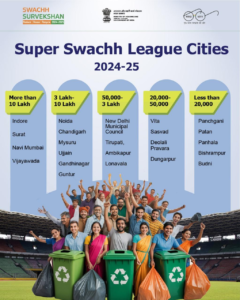- Home
- UPSC Mains
- Daily Free Initiatives
- Courses
- KPSC / KAS
- हिंदी
- Centres
- Contact Us
Category: INTERNATIONAL
Context: International Court of Justice (ICJ) in The Hague ruled that countries are obligated under international law to take action against climate change
In a historic decision, the, particularly by reducing greenhouse gas emissions and adapting to climate impacts. Failure to do so could be deemed an “internationally wrongful act,” making such countries liable for compensation, especially to vulnerable nations like small island states.
This advisory opinion, sought by the UN General Assembly, clarifies legal obligations under treaties like the UNFCCC, Paris Agreement (2015), UNCLOS, and others focused on environmental protection. Though non-binding, it is seen as a major milestone for climate justice and could influence future legal actions globally.
Learning Corner:
International Court of Justice (ICJ)
Overview:
Mandate & Jurisdiction:
The ICJ performs two main functions:
Composition:
Key Features:
Important Articles:
Landmark Cases:
Comparison with Other International Courts:
| Court | Jurisdiction | Binding Judgments | Parties |
|---|---|---|---|
| ICJ | Legal disputes between states | Yes (for parties) | States only |
| ICC (International Criminal Court) | Crimes like genocide, war crimes | Yes | Individuals |
| PCA (Permanent Court of Arbitration) | Wider disputes (incl. investment) | Yes (via arbitration) | States, individuals, organizations |
Source: THE INDIAN EXPRESS
Category: HISTORY
Context: Omission of Paikas from NCERT class 8
About Paikas:
British Annexation & Discontent:
The 1817 Paika Rebellion:
Learning Corner:
Important Tribal Revolts in British India
Tribal uprisings were a major component of early resistance against colonial rule. These revolts were primarily sparked by the British disruption of tribal autonomy, exploitation by landlords and moneylenders, encroachment on forest rights, and interference in socio-religious customs.
Common Themes Across Tribal Revolts
Source: THE INDIAN EXPRESS
Category: SCIENCE AND TECHNOLOGY
Context : The Indian Council of Medical Research (ICMR) has developed a promising malaria vaccine candidate named AdVacFxalVax.
It is showing over 90% protection against Plasmodium falciparum, the deadliest malaria parasite. It is now set for further testing, trials, and commercial development in partnership with private companies.
Significance:
How It Works:
Advantages of AdVacFxalVax:
Trends:
Learning Corner:
Malaria
Malaria is a potentially life-threatening parasitic disease transmitted by the bite of infected female Anopheles mosquitoes. It remains a significant public health concern in many tropical and subtropical regions, including India.
Causative Agent
Transmission
Symptoms
Diagnosis & Treatment
Prevention & Control
Malaria in India
Source : THE INDIAN EXPRESS
Category: SCIENCE AND TECHNOLOGY
Context: MiG-21s to Retire
After 62 years of service, the Indian Air Force will retire its last MiG-21 fighter jets in September 2025, with a ceremonial farewell at Chandigarh. The jets, operated by No. 23 Squadron (Panthers), will be replaced by indigenous Tejas Mk1A aircraft.
Glorious Beginnings
Combat Legacy
The MiG-21 played a key role in:
The “Flying Coffin” Controversy
Learning Corner:
MiG-21
The MiG-21 (Mikoyan-Gurevich 21) is a Soviet-origin supersonic jet fighter aircraft that became a critical part of India’s air defence architecture during the Cold War and beyond.
Key Highlights
Source: THE INDIAN EXPRESS
Category: POLITY
Context:
The Dhruva Policy (Digital Hub for Reference and Unique Virtual Address) is a landmark initiative by the Department of Posts to transform how addresses are created, shared, and managed in India. It introduces a precise, interoperable, and privacy-respecting digital addressing framework to support governance, e-commerce, emergency services, and more.
Key Components
DIGIPIN
Digital Address Layer
Core Benefits
Use Cases
Dhruva aims to be for addresses what UPI is for payments—secure, standardized, and citizen-friendly.
Source: PIB
Introduction (Context)
Animals are generally used in experiments and research to assess the safety, toxicity, efficacy, or biological effects of drugs, chemicals, or procedures. There is a growing concern about the ethical implications and effectiveness of animal testing.
Hereby analysing the issue in detail.
Animal testing, involves using animals in experiments to assess the safety and effectiveness of products like medicines, cosmetics, and household products, or to advance scientific knowledge.
Animal experiments include:
Before animals came to be used in toxicity tests, humans were used in feeding experiments to assess the risk of toxicity in American food supply. The first systematic test of this kind was conducted between 1902 to 1904 on behalf of the United States government to test the toxicity of preservatives such as benzoate, borax, and formaldehyde in food products.
Introduction (Context)
Ensuring proper sanitation and hygiene is crucial not only for maintaining good health and preventing diseases but also for upholding human dignity.
While all cultures and religions value cleanliness, many countries have struggled with poor sanitation conditions during different stages of their economic growth.
In India, inadequate sanitation has remained a persistent challenge. To address this, the government launched the Swachh Bharat Mission to improve cleanliness and hygiene across the nation.
Recently government has released the report of Swachh Survekshan 2025, It aims to assess the level of cleanliness, hygiene, and sanitation at urban level.


The business of waste management, though seemingly chaotic, remains possible and replicable, as demonstrated by Surat’s transformation from a garbage city three decades ago to a sanitation leader today. Cleanliness, if institutionalised effectively, can drive urban transformation across India.
Source: https://www.thehindu.com/opinion/op-ed/takeaways-from-the-swachh-survekshan/article69846449.ece
